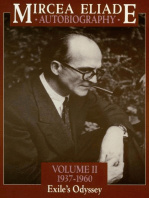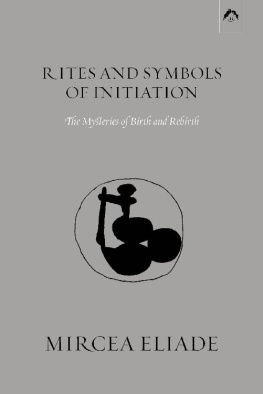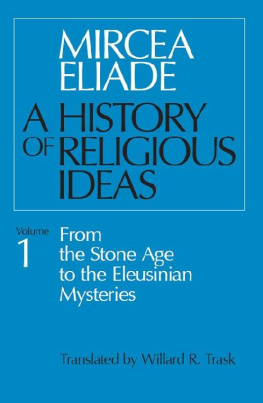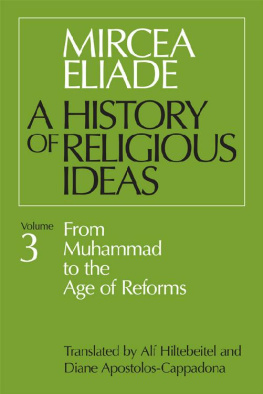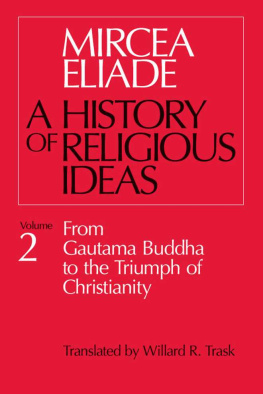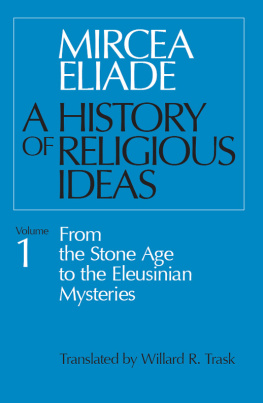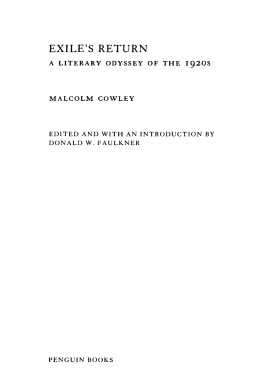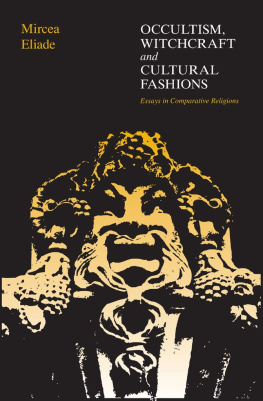Mircea Eliade - Autobiography, Volume 2: 1937-1960, Exiles Odyssey
Here you can read online Mircea Eliade - Autobiography, Volume 2: 1937-1960, Exiles Odyssey full text of the book (entire story) in english for free. Download pdf and epub, get meaning, cover and reviews about this ebook. year: 1988, genre: Detective and thriller. Description of the work, (preface) as well as reviews are available. Best literature library LitArk.com created for fans of good reading and offers a wide selection of genres:
Romance novel
Science fiction
Adventure
Detective
Science
History
Home and family
Prose
Art
Politics
Computer
Non-fiction
Religion
Business
Children
Humor
Choose a favorite category and find really read worthwhile books. Enjoy immersion in the world of imagination, feel the emotions of the characters or learn something new for yourself, make an fascinating discovery.
- Book:Autobiography, Volume 2: 1937-1960, Exiles Odyssey
- Author:
- Genre:
- Year:1988
- Rating:3 / 5
- Favourites:Add to favourites
- Your mark:
- 60
- 1
- 2
- 3
- 4
- 5
Autobiography, Volume 2: 1937-1960, Exiles Odyssey: summary, description and annotation
We offer to read an annotation, description, summary or preface (depends on what the author of the book "Autobiography, Volume 2: 1937-1960, Exiles Odyssey" wrote himself). If you haven't found the necessary information about the book — write in the comments, we will try to find it.
Autobiography, Volume 2: 1937-1960, Exiles Odyssey — read online for free the complete book (whole text) full work
Below is the text of the book, divided by pages. System saving the place of the last page read, allows you to conveniently read the book "Autobiography, Volume 2: 1937-1960, Exiles Odyssey" online for free, without having to search again every time where you left off. Put a bookmark, and you can go to the page where you finished reading at any time.
Font size:
Interval:
Bookmark:
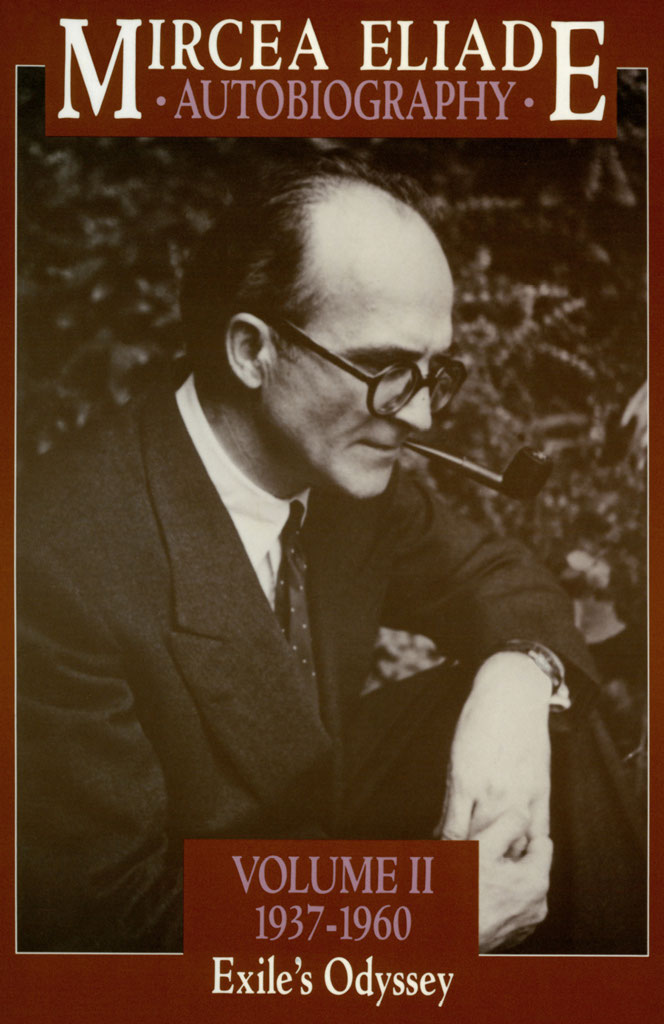
The University of Chicago Press, Chicago 60637
The University of Chicago Press, Ltd., London
1988 by Georgette Eliade
All rights reserved. Published 1988
Printed in the United States of America
97 96 95 94 93 92 91 90 89 88 5 4 3 2 1
ISBN 978-0-226-15954-6 (ebook)
Design courtesy of Jim Mennick
Library of Congress Cataloging-in-Publication Data
Eliade, Mircea, 1907
19371960, exiles odyssey.
(Autobiography / Mircea Eliade; v. 2)
Includes index.
1. Eliade, Mircea, 1907 . 2. Religion historiansUnited StatesBiography. I. Title. II. Series: Eliade, Mircea, 1907 . Autobiography; v. 2.
BL43.E4A315 vol. 2 291'.092'4 s 88-4743
ISBN 0-226-20411-1 [291'.092'4] [B]
MIRCEA ELIADE
Volume II: 19371960
Exiles Odyssey
TRANSLATED FROM THE ROMANIAN BY
Mac Linscott Ricketts

THE UNIVERSITY OF CHICAGO PRESS
Chicago and London
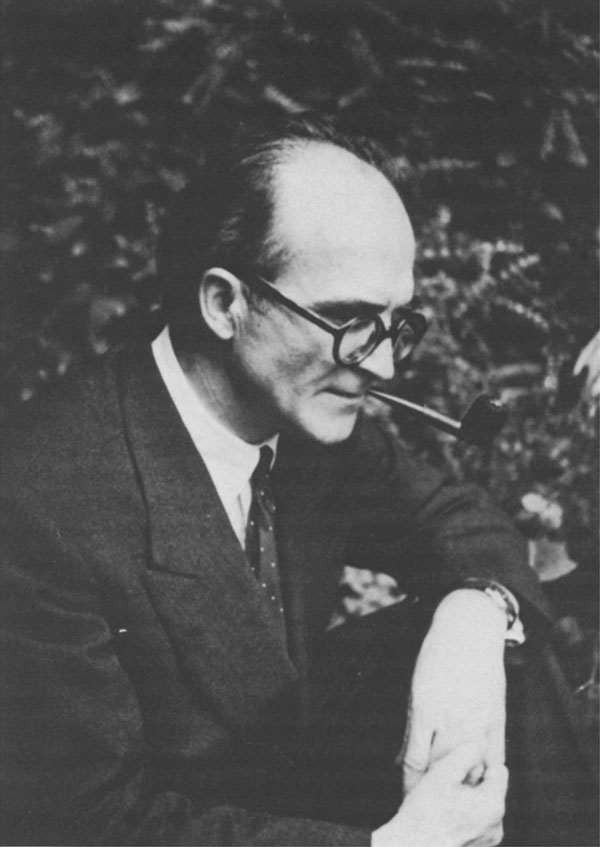
MIRCEA ELIADE
after leaving Romania, 1940
ON DECEMBER 10, 1984, as he began to compose chapter 23 of his memoirs, Mircea Eliade asked himself: Will I succeed in writing the Autobiography up to the point of last nights celebration? The celebration in question was the ceremony given in his honor at the seventy-fifth anniversary meeting of the American Academy of Religion held in Chicago, an occasion Eliade describes with modest brevity in the second paragraph of the chapter. He had decided to write the last section of his autobiography, on the Chicago years (from late 1956 on), in the form of a flashback from that culminating event of the night of December 9, 1984. (He had used this flashback style also in writing about his sojourn in India and his last three years in Romania.) But would he be able to complete the task? He was all too aware of the physical debilities that hampered his working: above all, the rheumatoid arthritis in his hands, against which he had been waging an unceasing warfare since 1960 and which made the writing of every sentence an excruciating ordeal. Moreover, he had other essential works in progress: the editing of the massive Encyclopedia of Religion and the completion of the final (fourth) volume of his History of Religious Ideas. For several years, these two projects had been his chief scientific concerns. But the project dearest to his heart, the one to which he longed to give himself wholly (as he told me in more than one conversation in these years), was his Autobiography. At one point he did not believe he would need to write more than three or four chapters to cover his time at the University of Chicago; but to judge from the last chapter he finished (chapter 24, which deals with less than two years activities), he would have been hard put to compress his rich and varied activities of that quarter-century-plus into less than seven or eight chapters.
Fortunately, for many of those Chicago yearsup through 1978as well as for his years in Paris, we have his published journal extracts, even though the major part of this material awaits publication in English. However, comparison of the Journal fragments with the Autobiography where they overlap (194560) reveals that the two are complementary and neither is sufficient in itself to encompass all of Eliades activities and thoughts. It is, then, a matter of deep regret that he was unable to complete his memoirs up to the targeted conclusion, his night of honor at the American Academy of Religions meeting.
Mircea Eliade died on the morning of April 22, 1986, at the Bernard Mitchell Hospital of the University of Chicago. He had been stricken eight days earlier with a cerebral blood clot at his apartment, as he sat reading a new book by his friend from youth and compatriot, Emil Cioran. His physical condition had been deteriorating for several years, but his mind had lost none of its keenness and vigor. He had suffered a severe blow to his morale, however, on December 18, 1985, when his office in Meadville-Lombard School of Religion caught fire and was gutted. (A note concerning the fire is appended to the last chapter of this volume.) Papers on his desk were destroyed (mainly material for his History, files of correspondence, and perhaps some autobiographical pages). The contents of the drawers, including notebooks of his Journal, survived relatively untouched. Most of his precious books were damaged by smoke and water, and he was unable to use them again. He never recovered from the shock of this disaster. Had it not occurred, he probably would have succeeded in writing at least one additional chapter for the Autobiography.
In accordance with his wishes, his body was cremated on the day following his death (while David Tracy of the universitys Divinity School read prayers). On April 28 a memorial service, attended by more than a thousand people from throughout the country and abroad, was held for him at the Rockefeller Chapel on the university campus. Readings from his works were given by loan Culianu (from Noaptea de Snzienethe Romanian original of The Forbidden Forest), Saul Bellow (from the Autobiography, I), Paul Ricoeur (from Le Mythe de lternel retour), and Wendy D. OFlaherty (from Yoga: Immortality and Freedom). His former colleague and dear friend, Charles H. Long, delivered a moving eulogy. Somewhat later, his ashes were interred in Oakwood Cemetery, not far from the university.
This second volume of Eliades Autobiography continues the narrative of his life from the point where the first endedthe summer of 1937but the first two chapters (15 and 16) and a part of the third are written retrospectively from the time of the London Blitz of September 1940. (Indeed, there is considerable moving back and forth in time in these chapters, somewhat as in the first part of The Forbidden Forest.) Eliade had already written an account of his last years in Romania (up to his departure for England in April 1940) as early as March 1973. A part of this account, however, seems to have remained in manuscript form only, because in late 1978, when he was making the decision as to what he would include in volume 1 of the Autobiography, he wrote in his journal:
The text [of the Autobiography] already typed carries the story down to the autumn of 1938. For a long time I planned to conclude the first volume in the spring of 1940 with my departure for London. I believe, however, that Ill have to write another two chapters, telling all I experienced and all that happened to me from April 1940 till September 1945 when I arrived in Paris. Only then, in the fall of 1945, does the rupture take place and the new life begin....
Ultimately, however, he decided to end the first volume with the early summer of 1937, when, at age thirty, he emerged victorious from an attack in which he was accused of writing pornography (see chapter 14 in the previous volume). By ending the story here, he was able to avoid having to write two or more additional chapters for which he did not then have the leisure, and also to postpone publishing the account of his last years in Romania which, as this volume reveals, were times of painful hardships and sorrows for him and his fellow countrymen.
For the first time, in this volume of his Autobiography, Eliade writes openly and in detail about what has been the most obscure era of his life: 193845. He reveals the circumstances that led to his being internedrather like tefan Viziru in The Forbidden Forestin a Romanian concentration camp for refusing to denounce the Legion of the Archangel Michael (the Iron Guard) with which his colleague Nae Ionescu and other close friends were associated. He relates the strange series of events that resulted in his release, and he discloses the difficulties under which he labored afterward when he was unable to secure any regular employment. We learn for the first time how Eliade came to enter diplomatic service in 1940 as cultural attache, and what services he rendered in that capacity during the war years. We read the moving account of the devastating personal tragedy he suffered in 1944: the death of his first wifea tragedy that followed by only a few months the fall of Romania to the Soviets. We can only try to imagine how difficult these chapters were for him to write.
Next pageFont size:
Interval:
Bookmark:
Similar books «Autobiography, Volume 2: 1937-1960, Exiles Odyssey»
Look at similar books to Autobiography, Volume 2: 1937-1960, Exiles Odyssey. We have selected literature similar in name and meaning in the hope of providing readers with more options to find new, interesting, not yet read works.
Discussion, reviews of the book Autobiography, Volume 2: 1937-1960, Exiles Odyssey and just readers' own opinions. Leave your comments, write what you think about the work, its meaning or the main characters. Specify what exactly you liked and what you didn't like, and why you think so.

